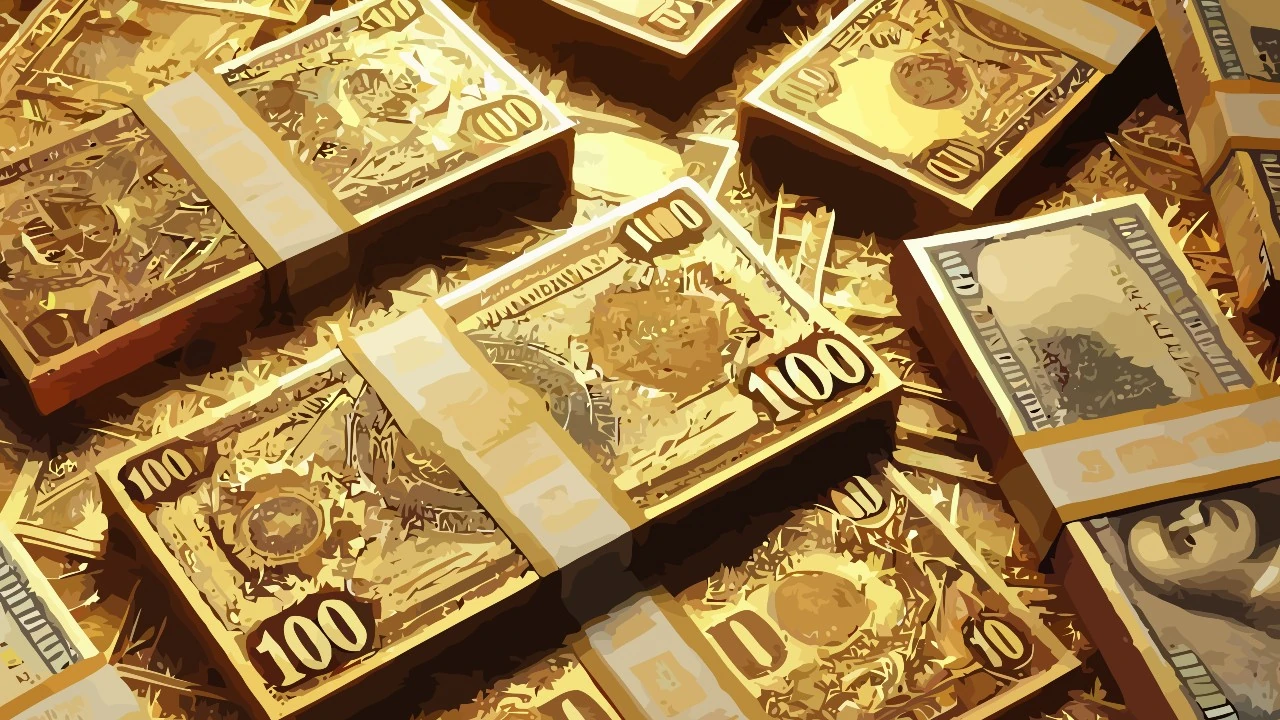Goldback notes are one of the most curious innovations in the panorama of alternatives to fiat money. Unlike classic paper currencies, these notes actually contain a percentage of gold, making them a tangible form of value.
Let’s analyze in detail the advantages, disadvantages and sustainability of this system.
I am not a financial advisor:
The information provided does not constitute a solicitation for the placement of personal savings. The use of the data and information contained as support for personal investment operations is at the complete risk of the reader.
Contents
#1. Goldbacks as a substitute
Goldbacks were created with the intention of providing a physical medium of exchange based on gold that is convenient to use in everyday transactions. Each denomination of the note corresponds to a specific amount of gold, which is laminated onto the surface through an atomic deposition process. In theory, these notes could represent a more stable monetary system than fiat currencies that are subject to inflation. However, their diffusion is still very limited, and their acceptance depends entirely on the will of those who receive them. Since they are not considered legal tender, their use is based on informal agreements between those who hold them and those who accept them as payment.
In some US states, such as Utah, Nevada and New Hampshire, these notes are accepted by some local businesses, creating a small but significant alternative economy based on physical gold. This experiment has attracted the attention of investors and enthusiasts of precious metals, who see Goldbacks as a possible alternative to currencies subject to devaluation. However, the expansion of this system is hampered by the need for adequate infrastructure and poor public awareness. The value of the individual note, tied to the amount of gold it contains, requires continuous verification of the price of gold on the market, which can represent a complication for daily transactions.
Furthermore, there are doubts about the real feasibility of an economic system based on these banknotes. Gold is a precious metal with limited availability, and the fact that Goldbacks have high production costs compared to their intrinsic value makes their adoption difficult on a large scale. Trust in the traditional financial system remains strong, and the use of alternative instruments such as Goldbacks clashes with the distrust of those who are not used to managing payments in precious metals. For this reason, although fascinating, Goldbacks remain a niche phenomenon with uncertain prospects for the future.
#2. The advantages of Goldbacks
Goldback banknotes offer numerous advantages, especially for those who want a medium of exchange tied to the value of gold. One of the main benefits is the guarantee of value, since each banknote contains a specific amount of gold that preserves its purchasing power over time. Unlike traditional currencies, which can be devalued by the monetary policies of central banks, Goldbacks represent a more stable and inflation-resistant alternative.
Because Goldbacks are tied to gold, their purchasing power tends to remain more stable than fiat currencies, which can lose value over time. This makes them particularly attractive to those looking to protect their assets from currency devaluation.
Goldbacks are also distinguished by their artistic and collectible design. Each note features refined details and symbolic images that increase their attractiveness, both for numismatic enthusiasts and for those looking for an aesthetic alternative to classic gold coins. This characteristic makes them not only a means of exchange, but also an object of cultural and historical value.
Another positive aspect is the ease of exchange compared to gold coins. Goldbacks, thanks to their small denominations, allow for transactions in minimal quantities of gold, making the use of precious metals more accessible in everyday expenses. This differentiates them from gold coins, which often have a high value and are impractical for small payments.
Additionally, Goldbacks are certified to contain exactly the stated amount of gold, thanks to their innovative production method. This provides greater security to users, who can be sure of the intrinsic value of the banknotes they own. Thanks to these features, Goldbacks have gained popularity among those who want a tangible store of value that is resistant to currency fluctuations.
Finally, an additional plus is that some merchants in the United States accept them voluntarily, creating a small network of alternative uses to traditional currency. Although they are not officially legal tender, their voluntary acceptance demonstrates that there is a market for gold-based payment instruments. However, despite these advantages, Goldbacks also have some limitations that make it difficult to spread them on a large scale.
#3. The disadvantages of Goldbacks
Despite their many advantages, Goldback banknotes also have several limitations that hinder their widespread use. One of the main problems is that they cost more than the value of the gold they contain. This is because the production of Goldbacks uses an advanced technological process that increases the final price compared to the simple value of the precious metal they contain. As a result, those who buy them often pay a considerable premium, making them less convenient than other forms of gold investment.
Another significant disadvantage is their limited acceptance. Since they are not recognized as legal tender, their circulation depends solely on the will of merchants and users. Currently, their use is limited to certain areas of the United States, making them impractical for people in other parts of the world. Furthermore, the lack of a robust secondary market further complicates their use as a means of everyday payment.
Goldbacks are also difficult to find outside of the United States, especially in Europe. Purchasing options are limited to a few specialty retailers, and shipping and customs fees can make purchasing them even less affordable. This makes them less accessible to anyone who doesn’t live in an area where they are commonly accepted.
Another critical point is the fragility of the economic model based on Goldbacks. Being a niche product, their success depends on the growth of the network of users and merchants willing to use them. If demand does not increase, the risk is that these banknotes will remain a marginal phenomenon, more similar to a collector’s item than to an effective monetary alternative.
Finally, it should be considered that the value of gold fluctuates over time, which could influence the exchange value of Goldbacks compared to traditional currencies. Those who accept them must be constantly updated on the metal’s prices, an operation that could be inconvenient and impractical in the long term.
#4. Fun facts about Goldbacks
Goldbacks are not only an alternative to fiat money, but also have a number of interesting features that make them unique. For example, each American state that adopts Goldbacks has a series of unique artistic designs, which depict symbols and allegorical figures inspired by local culture and history. This aspect makes them not only a medium of exchange, but also highly prized collectibles among numismatic enthusiasts.
Another interesting fact concerns the production process, already mentioned above. Goldbacks are created using an advanced atomic deposition technology, which allows very thin layers of gold to be laminated onto a resistant polymer material. This process ensures that each note contains the precise amount of gold declared, but at the same time it entails high production costs, as already mentioned in the disadvantages section.
Some collectors and investors see Goldbacks as an innovative form of store of value, comparable to fractional gold coins, but with a more artistic and detailed look. Additionally, unlike coins, Goldbacks are very light and easy to carry, which could make them attractive to those who want to own gold in a more convenient and secure form.
Another fascinating aspect is that Goldbacks are more resistant to water and fire than traditional paper banknotes. Thanks to their special base material, they can withstand adverse environmental conditions without deteriorating, a detail that makes them particularly durable over time.
Finally, while digital currencies are gaining traction in many countries, Goldbacks represent a curious throwback, offering a physical, tangible alternative that harks back to the days when money was actually backed by gold. It remains to be seen whether this initiative will be able to expand beyond the US borders or remain a niche phenomenon reserved for a few enthusiasts.











Leave a Reply